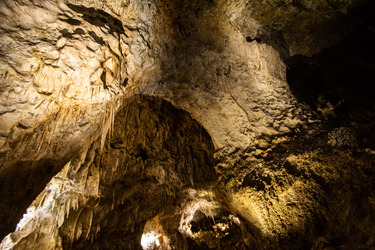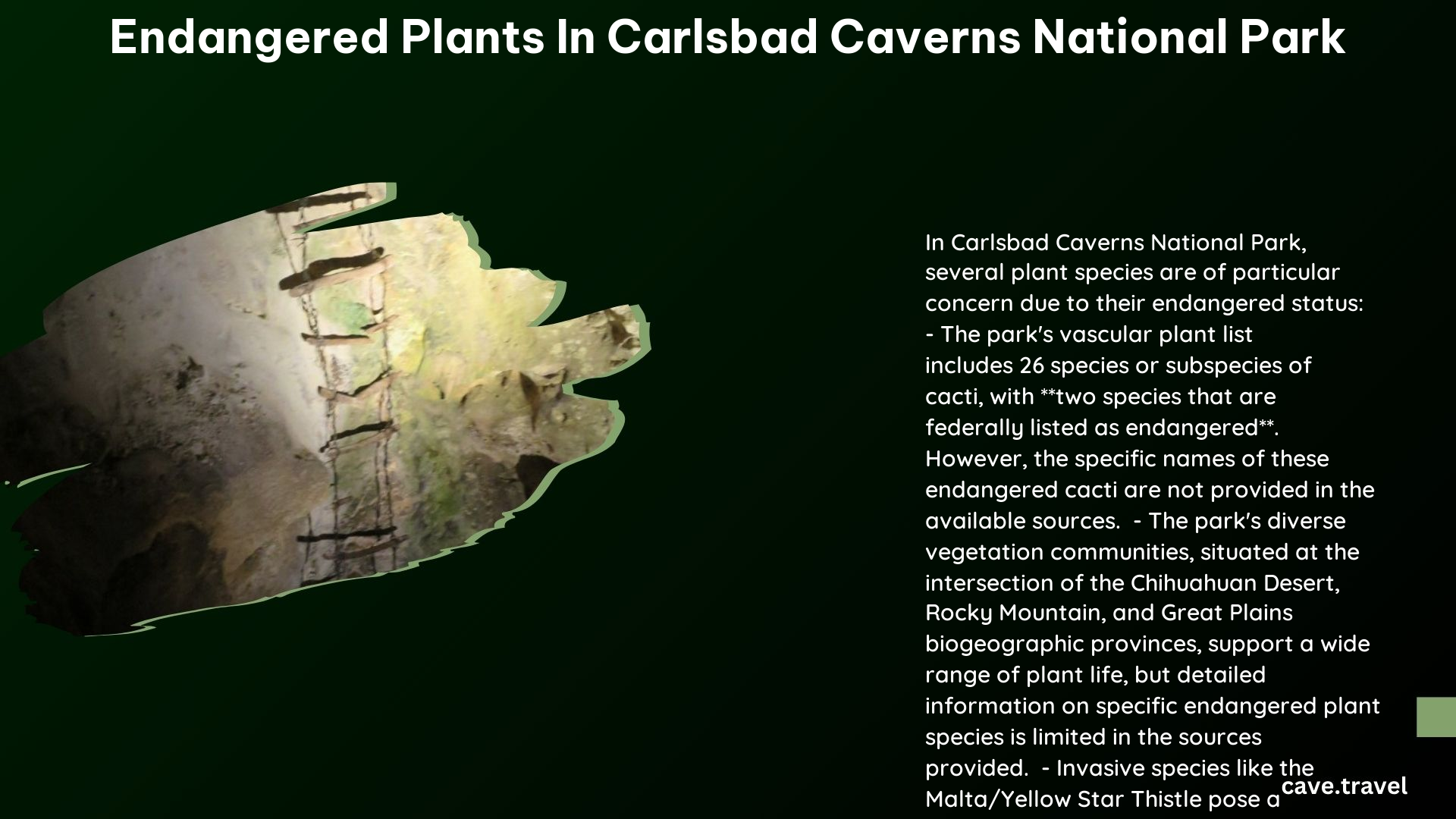Carlsbad Caverns National Park, located at the intersection of the Chihuahuan Desert, Rocky Mountain, and Great Plains biogeographic provinces, hosts a diverse range of flora. The park’s unique geological features and varied ecosystems provide habitats for numerous plant species, including some that are endangered. Conservation efforts are ongoing to protect these rare plants from threats such as water scarcity, invasive species, and human impact.
What Makes Carlsbad Caverns National Park Unique for Plant Life?

Carlsbad Caverns National Park’s distinctive geological and ecological features create a unique environment for plant life:
- Diverse ecosystems
- Varied elevations
- Unique cave systems
- Intersection of multiple biogeographic provinces
This diversity allows for a wide range of plant species to thrive, including some that are rare or endangered.
Which Plant Species are Endangered in the Park?

While specific information on endangered plant species in Carlsbad Caverns National Park is limited, the following points are noteworthy:
- The park’s vascular plant list includes several species of concern
- Two species of cacti are federally listed as endangered
- Exact names and details of these endangered species are not provided in the available sources
It’s important to note that the park’s flora is continuously monitored and studied, and the status of various species may change over time.
What are the Main Threats to Endangered Plants in the Park?
Endangered plants in Carlsbad Caverns National Park face several threats:
- Water Scarcity
- Unpredictable rainfall
-
Drought conditions
-
Invasive Species
- Non-native plants competing for resources
-
Ecosystem imbalance caused by invasive fauna
-
Human Impact
- Tourism and development
-
Habitat fragmentation
-
Climate Change
- Shifting temperature and precipitation patterns
- Altered growing seasons
These threats can significantly impact the survival and reproduction of endangered plant species in the park.
How Does the Park Manage Conservation of Endangered Plants?
Carlsbad Caverns National Park employs various strategies to conserve endangered plants:
- Fire Management
- Controlled burns to improve grassland health
-
Reintroduction of native species
-
Habitat Protection
- Preservation of diverse ecosystems
-
Protection of riparian areas like Rattlesnake Springs
-
Monitoring and Research
- Regular surveys and inventories
-
Collaboration with scientific institutions
-
Access Control
- Restricted access to sensitive areas
- Visitor education on plant conservation
| Conservation Strategy | Purpose | Impact |
|---|---|---|
| Fire Management | Maintain natural fire cycle | Promotes native vegetation growth |
| Habitat Protection | Preserve natural ecosystems | Maintains plant diversity |
| Monitoring and Research | Track plant populations | Informs conservation decisions |
| Access Control | Minimize human disturbance | Protects sensitive plant habitats |
What Role Do Native Plants Play in the Park’s Ecosystem?
Native plants are crucial to the ecosystem of Carlsbad Caverns National Park:
- Ecosystem Balance: They provide food and shelter for various animals
- Soil Stability: Root systems help prevent erosion
- Water Cycling: Native plants are adapted to local water conditions
- Biodiversity Support: They create habitats for a wide range of species
Native plants have evolved to thrive in the park’s unique conditions, making them essential for maintaining the overall health of the ecosystem.
Are There Any Unique Plant Species in Lechuguilla Cave?
Lechuguilla Cave, part of the Carlsbad Caverns system, presents a unique environment for potential plant life:
- Deep and Extensive: One of the world’s deepest caves
- Limited Data: Specific information on plant species is scarce due to the cave’s isolation
- Strict Regulations: Human activity is tightly controlled to protect the cave’s ecosystem
- Potential for Unique Adaptations: The cave’s environment may support specially adapted plant life
While detailed information on plant species within Lechuguilla Cave is limited, its unique conditions make it a subject of ongoing scientific interest.
How Can Visitors Help Protect Endangered Plants in the Park?
Visitors to Carlsbad Caverns National Park can contribute to plant conservation:
- Stay on designated trails
- Do not collect or disturb plant life
- Report any sightings of rare or unusual plants to park staff
- Participate in guided educational programs about park flora
- Support park conservation efforts through donations or volunteer work
By following these guidelines, visitors can help ensure the continued survival of endangered plant species in the park.
References:
1. https://www.nps.gov/cave/learn/nature/plants.htm
2. https://www.nps.gov/articles/carlsbad-caverns-national-park-reptile-and-amphibian-inventory.htm
3. https://carlsbadcavernstradingco.com/chihuahuan-desert/
